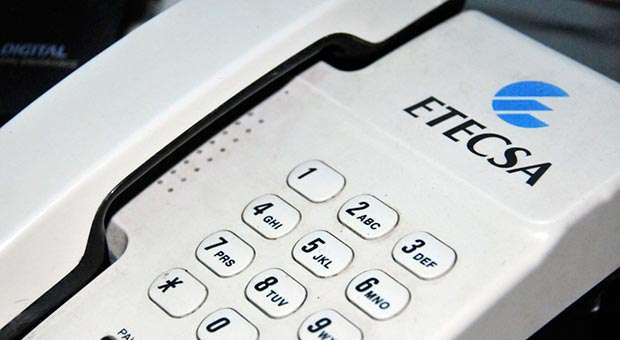Prices of local and national and international long distance, along the ones from landlines to the mobile network , the setup fee , monthly fee , major movements , and other supplemental services for fictitious persons will be raised by resolution of the Ministry of Communications issued on September 10, 2013 , and will become effective on January 1, 2014 .
From this date , companies and agencies must submit their budget to significant variations in their current telephone consumption , as if they have now , for local calls, a basic fee of 450 minutes worth 9.95 CUP , and after this quota is consumed , the fate per minute is 0.03 CUP ( daytime call) and 0.02 CUP (Night call ) in 2014 will be charged the base fee of 20.00 CUP that will have no bonus , so that every minute will be charged at 0.20 CUP (daytime) and 0.14 CUP ( night ) .
The bonus 450 minutes to 9.95, consumed between 6:00 am and 5:59 pm, will now be converted into 90.00 CUP, a tenfold increase.
This information has spread like wildfire. Apparently, yesterday on November 21, the various state divisions have begun to receive emails which included the resolution, and “the cries have been heard in heaven.”
A recent publication on ” How Telecommunications Services in Cuba Are Doing” states that ” out of the total number of fixed telephone lines installed , 40.7% is in a state of obsolescence , given the rapid evolution of technology and the plight of its support considering costs and non-production of those old computers in the market for communications technologies . “
So you can understand the need for money ETECSA has to invest in infrastructure, which has had serious problems lately, affecting Internet services and cellular telephony. According to Mr. Wilfredo González Vidal, Deputy Minister of Communications in a Granma newspaper interview, “there are no other limitations than the technological and financial ones. At present, it is not possible immediate widespread access to the Internet, given the economic possibilities of the country and the investments required. “
If to all this you add that, according to data provided by Etectas to the website CubaDebate “40% of the telephone lines are currently subsidized and out of the total costs in CUC executed by the end of 2012 , 55% was allocated for these subsidized services – of these, 70 % went to the residential sector . (And especially that) this is offset by the high prices still maintain services that are sold in CUC “, then we can understand that Etecsa seek profits, and the residential sector, with so depressed income, is not, at least, not now, its “target”.
Currently, Cuba has 3,008,867 lines in operation, according to 2012 data provided by the National Bureau of Statistics and Information. Of them are 1 million 216 522 are fixed telephony lines of which 297 830 belong to the non-residential sector, out of which Etecsa will make its next “extraction” of cash. However, although it says it clear who is going to “change”, many people fear that the resolution is applied later in the residential sector.










